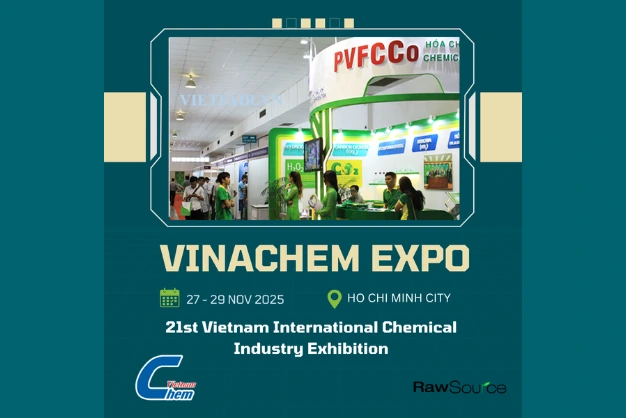TABLE OF CONTENTS
TABLE OF CONTENTS
Hydrofluoric acid (HF) is a highly reactive and dangerous chemical, widely recognized for its ability to dissolve glass and other materials that are typically resistant to acids. Despite its hazardous nature, HF plays a crucial role in various industrial, medical, and scientific applications due to its unique chemical properties. This guide delves into the diverse uses of hydrofluoric acid, providing detailed insights into its applications, benefits, and safety considerations.
Hydrofluoric Acid Uses
Industrial Uses of Hydrofluoric Acid
Glass Etching and Frosting: Hydrofluoric acid is primarily known for its ability to etch glass. The etching process involves applying HF to the glass surface, where it reacts with silica (SiO2) to form gaseous silicon tetrafluoride (SiF4) and water. This reaction allows for precise control over the etching process, making HF ideal for creating intricate designs and patterns on glassware, laboratory equipment, and even artistic pieces.
Examples of applications in various industries include:
Metal Cleaning and Pickling: In the metal industry, HF is used for cleaning and pickling metals. It effectively removes oxides and other impurities from metal surfaces, enhancing their appearance and preparing them for further processing. This is particularly important in the manufacturing of stainless steel, where HF plays a critical role in removing the chromium oxide layer.
Surface Preparation: Ensuring a clean, oxide-free surface for welding and coating is crucial in many industries, as any contamination can lead to weak welds and poor adhesion of coatings. HF effectively removes rust, scale, and other oxides, providing a pristine metal surface. This is essential in industries like shipbuilding, automotive manufacturing, and construction, where the structural integrity and longevity of welded joints and coatings are paramount.
Passivation: Creating a uniform, passive oxide layer that enhances corrosion resistance is a key process in stainless steel manufacturing. HF is used to remove the chromium oxide layer, allowing for the formation of a new, uniform passive layer. This process improves the durability and resistance of stainless steel to corrosive environments, making it suitable for use in chemical processing, food and beverage production, and marine applications. Proper passivation ensures that stainless steel components maintain their aesthetic appearance and structural integrity over time.
Production of Fluorine-Containing Compounds: Hydrofluoric acid is a key precursor in the production of various fluorine-containing compounds, including fluoropolymers and refrigerants.
Role in manufacturing fluoropolymers (e.g., Teflon):
Fluoropolymers: HF is instrumental in the synthesis of polytetrafluoroethylene (PTFE), widely known as Teflon. This material is celebrated for its exceptional non-stick and heat-resistant properties, making it a staple in various industries. In the kitchen, Teflon-coated cookware prevents food from sticking, making cooking and cleaning easier. In the industrial sector, PTFE’s resistance to heat and chemical reactions makes it invaluable for coating machinery and equipment that operate under extreme conditions. Additionally, PTFE’s low friction properties are crucial in the manufacture of bearings, seals, and gaskets, reducing wear and enhancing the lifespan of mechanical components.
Refrigerants: HF plays a critical role in the production of hydrofluorocarbons (HFCs), which are used as refrigerants in air conditioning and refrigeration systems. HFCs are preferred because they have lower environmental impact compared to older refrigerants like chlorofluorocarbons (CFCs) and hydrochlorofluorocarbons (HCFCs), which deplete the ozone layer. In modern refrigeration systems, HFCs provide efficient cooling while minimizing greenhouse gas emissions. This transition to HFCs has been vital in reducing global warming potential and promoting sustainable practices in both residential and commercial cooling solutions. Moreover, ongoing research aims to develop even more eco-friendly refrigerants, continuing the legacy of HF’s importance in this field.
Petroleum Refining: In the petroleum industry, HF serves as a catalyst in the alkylation process, which is essential for producing high-octane gasoline. The alkylation process involves combining light hydrocarbons to form high-octane components that enhance gasoline’s quality and performance.
Benefits in improving gasoline quality:
Higher Octane Levels: Higher octane levels in gasoline are crucial for improving engine performance and reducing knocking. Hydrofluoric acid (HF) is used as a catalyst in the alkylation process, which combines light hydrocarbons into high-octane compounds. These compounds enhance fuel stability and efficiency, allowing engines to run at higher compression ratios without knocking. This results in smoother operation, increased power output, and better fuel economy. High-octane fuels also contribute to longer engine life by minimizing detonation-related damage.
Cleaner Combustion: Cleaner combustion is another significant benefit of using HF in petroleum refining. The alkylation process produces high-quality, cleaner-burning fuels that reduce the emission of pollutants such as carbon monoxide, hydrocarbons, and nitrogen oxides. This is particularly important in meeting stringent environmental regulations and improving air quality. By producing fuels that burn more completely and efficiently, HF helps in reducing the environmental footprint of gasoline engines. Cleaner combustion also means fewer deposits in the engine, leading to better performance and lower maintenance costs.
Medical and Dental Applications of Hydrofluoric Acid
Medical Uses: Hydrofluoric acid is used in certain medical applications, primarily for its sterilizing properties. It is employed in the production of some antiseptics and disinfectants, ensuring the elimination of harmful microorganisms from medical equipment and surfaces.
Dental Applications: In dentistry, HF is utilized for etching enamel and creating dental prosthetics. The acid etches the surface of the tooth, increasing the surface area for bonding and enhancing the adhesion of dental materials.
Role in creating dental prosthetics and etching enamel:
Bonding Agents: In dentistry, HF is crucial for improving the adhesion of composite resins to tooth surfaces. The acid etches the enamel, creating microscopic pores that increase the surface area for bonding. This enhanced adhesion is essential for various dental procedures, such as fillings, veneers, and crowns, ensuring that the restorative materials stay firmly attached to the teeth. This results in longer-lasting dental work and improved overall oral health for patients.
Prosthetic Fabrication: HF plays a vital role in the precise fitting and strong bonding of dental prosthetics. When creating dental prosthetics like crowns, bridges, and dentures, HF is used to etch the surfaces of both the tooth and the prosthetic. This process ensures a perfect fit and a strong bond between the natural tooth structure and the artificial component. This not only improves the durability and functionality of the prosthetics but also enhances the comfort and satisfaction of the patient, providing a more natural feel and appearance.
Laboratory and Analytical Uses of hydrofluoric acid
In the laboratory, hydrofluoric acid is indispensable for chemical synthesis and various analytical procedures. It is used to etch silicon wafers, which are crucial in the semiconductor industry for the production of electronic devices.
Importance in etching silicon wafers in semiconductor manufacturing:
Microelectronics: Hydrofluoric acid (HF) is indispensable in the fabrication of integrated circuits and other microelectronic components. In the semiconductor industry, silicon wafers are etched using HF to create the intricate patterns required for the circuitry of microchips. These microchips are the backbone of modern electronics, found in everything from smartphones and computers to medical devices and automobiles. The ability of HF to precisely etch silicon enables the development of smaller, more powerful, and more efficient electronic devices.
Precision Etching: The precision etching capabilities of HF allow for the creation of intricate patterns and structures on silicon wafers. This precision is crucial in the production of high-density circuits and components, where even the smallest defect can lead to significant performance issues. HF’s ability to remove silicon dioxide layers selectively enables the detailed and accurate patterning necessary for advanced semiconductor devices. This ensures high performance and reliability in a wide range of electronic applications, from consumer electronics to industrial and aerospace technologies.
Regulatory Aspects
Due to its hazardous nature, the use of hydrofluoric acid is heavily regulated. Industries that utilize HF must comply with stringent safety and environmental regulations to mitigate the risks associated with its use.
Overview of regulations governing HF use:
Occupational Safety and Health Administration (OSHA): Regulates workplace exposure and safety measures.
Environmental Protection Agency (EPA): Governs the environmental impact and disposal of HF.
Compliance requirements for industries using HF:
Safety Protocols: Implementing proper handling, storage, and disposal procedures.
Training Programs: Ensuring that employees are adequately trained in HF safety and emergency response.
Conclusion
Hydrofluoric acid is a versatile and essential chemical with a wide range of applications across various industries. Despite its dangerous properties, its unique ability to react with silica and other substances makes it invaluable in glass etching, metal cleaning, fluoropolymer production, petroleum refining, medical and dental applications, and laboratory uses.
The responsible use and handling of HF, in compliance with regulatory standards, ensure that its benefits can be harnessed safely and effectively. Understanding the diverse applications and safety considerations associated with hydrofluoric acid is crucial for industries and professionals who rely on this powerful chemical.
Contact Us
Questions or looking for a quote?





